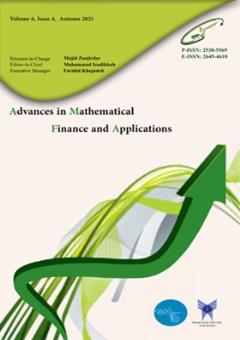Early Warning Model for Solvency of Insurance Companies Using Machine Learning: Case Study of Iranian Insurance Companies
Subject Areas : Financial Mathematics
Saeed Naseri Khezerlou
1
![]() ,
Atousa Goodarzi
2
,
Atousa Goodarzi
2
![]()
1 - Department of Insurance, ECO College of Insurance, Allameh Tabatabai University, Tehran, Iran
2 - Department of Insurance, ECO College of Insurance, Allameh Tabatabai University, Tehran, Iran
Keywords: Insurance, Solvency, Early Warning Model, Machine Learning, Financial Ratio Analysis,
Abstract :
Stakeholders of an organization avoid undesirable outcomes caused by ignoring the risks. Various models and tools can be used to predict future outcomes, aiming to avoid the undesirable ones. Early warning models are one of the approaches that could help them in doing so. This study focuses on developing an early warning system using machine learning algorithms for predicting solvency in the insurance industry. This study analyses 23 financial ratios from Iranian general insurance companies listed on the Tehran Stock Exchange between 2015 and 2020. The model uses Decision Tree, Random Forest, Artificial Neural Networks, Gradient Boosting Machine and XGBoost algorithms, with Boruta as a feature selection method. The dependent variable is the solvency margin ratio, and the other 22 ratios are the independent variables, which Boruta reduces to 7 variables. Firstly, the performance of the machine learning models on two datasets, one with 22 independent variables and one with 7, is compared based on RMSE values. The XGBoost algorithm performs the best on both data sets. Additionally, the study predicts the 2020 values for 19 insurance companies, performs stage classifications, and compares actual stages to predicted stages. In this analysis, Random Forest has the best estimate accuracy on both data sets, while Gradient Boosting Machine has the best estimate accuracy on the Boruta data set. Finally, the study compares the machine learning models' results in terms of capital adequacy classification, where Random Forest performs the best on both data sets, and Gradient Boosting Machine on the Boruta data set.
[1] Kasbi, P., Aghaei, M. A., Fair Value Accounting for Liabilities and Own Credit Risk, Advances in Mathematical Finance and Applications, 2017; 2(1):55-68. Doi: 10.22034/amfa.2017.529061
[2] Díaz, Z., Segovia, M.J., Fernández, J., del Pozo, E., Machine learning and statistical techniques. An application to the prediction of insolvency in Spanish non-life insurance companies, The International Journal of Digital Accounting Research, 2005; 5(9):1-45. Doi: 10.4192/1577-8517-v5_1
[3] Haghverdilou, M., Peykarjou, K. and ZomorodianS, G.R., Introducing Early Warning System for Sol-vency of Iranian Insurance Companies, Using Pane data method, Journal of Investment Knowledge, 2022; 11(44):417-452, (in Persian).
[4] Wang, T., Zhao, S., Zhu G., Zheng, H., A machine learning-based early warning system for systemic banking crises, Applied economics, 2021; 53(26):2974-2992. Doi: 10.1080/00036846.2020.1870657
[5] Caporale, G.M., Cerrato, M. and Zhang, X., Analysing the determinants of insolvency risk for general insurance firms in the UK, Journal of Banking & Finance, 2017; 84: 107-122. Doi: 10.1016/j.jbankfin.2017.07.011
[6] Beaver, W. H., Financial Ratios as Predictors of Failure, Journal of Accounting Research, 1966; 4:71–111. Doi: 10.2307/2490171
[7] Brockett, P. L., Cooper, W. W., Golden, L. L., & Pitaktong, U., A Neural Network Method for Obtaining an Early Warning of Insurer Insolvency, The Journal of Risk and Insurance, 1994; 61(3):402–424. Doi: 10.2307/253568
[8] Segovia-Vargas, M.J., Salcedo-Sanz, S. and Bousono-Calzon, C., Prediction of Insolvency in Non-life Insurance Companies Using Support-vector Machines, Genetic Algorithms and Simulated Annealing, Fuzzy Economic Review, 2004; 9(1):79-94. Doi: 10.25102/fer.2004.01.05
[9] Sharpe, I.G. and Stadnik, A., Financial distress in Australian general insurers, Journal of Risk and In-surance, 2007; 74(2):377-399. Doi: 10.1111/j.1539-6975.2007.00217.x
[10] Rustam, Z. and Yaurita, F., Insolvency prediction in insurance companies using support vector ma-chines and fuzzy kernel c-means, Paper presented at 2nd International Conference on Statistics, Mathe-matics, Teaching, and Research, 2018.
[11] Ayodele, T.O., "Types of machine learning algorithms", in Zhang, Y., New advances in machine learning, Croatia, InTech, 2010:19-48.
[12] Zhao, Y., Research on personal credit evaluation of internet finance based on blockchain and deci-sion tree algorithm, EURASIP Journal on Wireless Communications and Networking, 2020; :1-12. Doi: 10.1186/s13638-020-01819-w
[13] Song, Y.Y. and Ying, L.U., Decision tree methods: applications for classification and prediction, Shanghai archives of psychiatry, 2015; 27(2):130-135. Doi: 10.11919/j.issn.1002-0829.215044
[14] Koçer, G. B., Early warning model with machine learning for Turkish insurance sector, M.Sc. Thesis, Middle East Technical University, Ankara, Turkey, 2019.
[15] Tehrani, R., Souri, A., Zohrabi, A., Sadeghi Sharif, S. J., Provide an improved factor pricing model using neural networks and the gray wolf optimization algorithm, Advances in Mathematical Finance and Applications, 2023; 8(1):23-45. Doi: 10.22034/amfa.2022.1942547.1641
[16] Codrut Florin, I., Option pricing using Machine Learning, Expert Systems with Applications, 2021; 163:113799. Doi: 10.1016/j.eswa.2020.113799
[17] Bärtl, M. and Krummaker, S., Prediction of Claims in Export Credit Finance: A Comparison of Four Machine Learning Techniques, Risks, 2020; 8(1): Doi:10.3390/risks8010022
[18] Cook, D., Practical machine learning with H2O: powerful, scalable techniques for deep learning and AI, United States of America, O'Reilly Media, Inc., 2016.
[19] Hastie, T., Tibshirani, R. and Friedman, J., The elements of statistical learning, United States of Amer-ica, Springer series in statistics, 2001.
[20] Mitchell, R. and Frank, E., Accelerating the XGBoost algorithm using GPU computing, PeerJ Com-puter Science, 2017; 3:127. Doi: 10.7717/peerj-cs.127
[21] Kursa, M.B. and Rudnicki, W.R., Feature selection with the Boruta package, Journal of statistical software, 2010; 36(11):1-13. Doi: 10.18637/jss.v036.i11
[22] Tavakoli, M., Doosti, H., Forecasting the Tehran Stock market by Machine Learning Methods using a New Loss Function, Advances in Mathematical Finance and Applications, 2021; 6(2):194-205.
Doi: 10.22034/amfa.2020.1896273.1399
[23] Candel, A., Parmar, V., LeDell, E. and Arora, A., Deep learning with H2O, United States of America, H2O.ai, Inc, 2016

